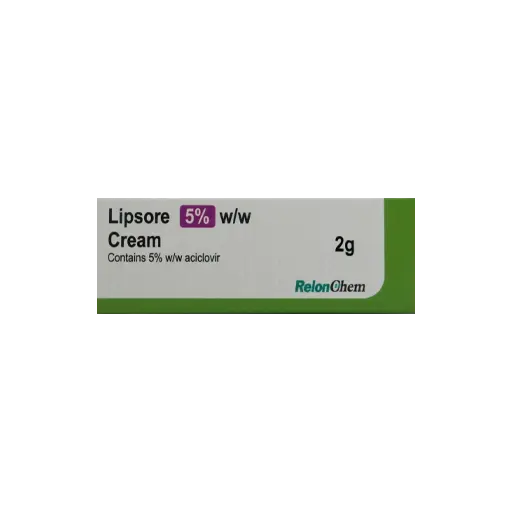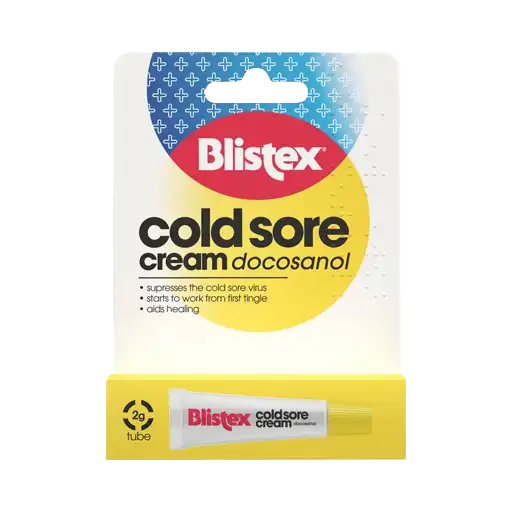cold sores consultation
Please fill in the questionnaire below. Any information provided will be kept confidential and will only be seen by a prescriber. These questions are designed to give our prescriber enough information to make a decision on whether the treatment is suitable, please fill them in truthfully.
cold sores
Cold sores, also known as fever blisters, are small, fluid-filled blisters that typically appear on or around the lips. They are caused by the herpes simplex virus (HSV), most commonly HSV-1. The initial infection may cause painful sores in and around the mouth, but subsequent outbreaks are usually milder. Cold sores are highly contagious and can spread through close personal contact, such as kissing or sharing utensils. Symptoms include tingling or itching around the lips, followed by the appearance of blisters that eventually burst and form a crust. While there is no cure, antiviral medications can help reduce the severity and frequency of outbreaks.
Cold Sores
Cold sores are small, fluid-filled blisters that appear around the lips or mouth. They are caused by the herpes simplex virus (usually HSV-1).
Cold sores are very common and usually clear up on their own within 7 to 10 days. However, they can be painful, irritating, and contagious.
The virus stays in your body after the first infection and can become active again, causing recurring outbreaks.
What causes cold sores?
Cold sores are caused by the herpes simplex virus (HSV). Once you are infected, the virus stays in your body and can reactivate at any time.
Common triggers for flare-ups include:
- Stress or tiredness
- Illness or fever (e.g. cold or flu): Often referred to as a “fever blister”
- Sun exposure or cold weather
- Weakened immune system
- Hormonal changes: e.g. during menstruation
- Injury to the lips or dental work
What are the symptoms of a cold sore?
Cold sores usually develop in stages:
- Tingling or itching: Often the first sign - a burning or itching sensation on or around the lips
- Blisters: Small, fluid-filled blisters appear, usually on the edge of the lip
- Weeping: The blisters burst and leave open sores that may be painful
- Crusting: A yellowish scab forms as the sore begins to heal
The first infection (primary infection) can sometimes cause more severe symptoms like swollen gums, sore throat, fever, or feeling unwell, especially in children.
Cold Sores vs Angular Cheilitis vs Impetigo
Cold sores, angular cheilitis, and impetigo can all cause sores or irritation around the mouth - but they have different causes, appearances, and treatments. Here's how to tell them apart:
Cause
- Cold Sores: Caused by the herpes simplex virus (usually HSV-1)
- Angular Cheilitis: Inflammation caused by saliva buildup, fungal (Candida), or bacterial infection
- Impetigo: Bacterial infection (usually Staphylococcus aureus or Streptococcus) - highly contagious
Location
- Cold Sores: Typically on or around the lips, often one side only
- Angular Cheilitis: In the corners of the mouth (one or both sides)
- Impetigo: Usually around the nose and mouth, but can appear anywhere on the face or body
Appearance
- Cold Sores: Fluid-filled blisters that burst and crust over
- Angular Cheilitis: Red, cracked, sore, or split skin at the corners of the mouth
- Impetigo: Red sores that quickly rupture and form golden-yellow crusts
Symptoms
- Cold Sores: Tingling, burning, pain before blisters appear
- Angular Cheilitis: Dryness, cracking, soreness, possible bleeding when opening the mouth
- Impetigo: Itching, redness, and crusting - may spread easily
Contagious?
- Cold Sores: Yes - highly contagious, especially when blisters are open
- Angular Cheilitis: Not usually contagious unless caused by an active fungal or bacterial infection
- Impetigo: Yes - very contagious through contact
Treatment
- Cold Sores: Antiviral creams (e.g. aciclovir), oral antivirals for severe or recurrent cases
- Angular Cheilitis: Antifungal or antibacterial creams, barrier ointments (e.g. petroleum jelly), addressing underlying causes like lip licking or denture fit
- Impetigo: Topical or oral antibiotics prescribed by a GP
If you're unsure which condition you have, especially if symptoms are severe or don't improve, speak to a pharmacist or GP for the right diagnosis and treatment.
Are cold sores contagious?
Yes - cold sores are very contagious, especially when the blisters are open and weeping. The virus can be spread through:
- Kissing or close contact
- Sharing items like cutlery, lip balm, towels, or razors
- Oral sex - which can transmit the virus to the genitals
You can spread the virus even when you don't have visible symptoms, but it is most infectious during an active outbreak.
Cold sore treatments
Cold sores usually heal without treatment, but you can speed up healing and reduce symptoms using antiviral products.
Antiviral creams
- Aciclovir cream (e.g. Zovirax) or Blistex cream: Helps reduce healing time if used at the first sign of tingling
Oral antiviral tablets
- Aciclovir or valaciclovir: May be prescribed for frequent or severe outbreaks
Other symptom relief
- Cold sore patches: Hydrocolloid patches cover the sore, promote healing, and reduce spread
- Pain relief: Ibuprofen or paracetamol for discomfort
- Lip balms with SPF: Help prevent flare-ups caused by sun exposure
Will treatment work?
Antiviral treatments work best when used early - ideally at the first sign of tingling or burning.
While they don't cure the virus, they can speed up healing by 1 to 2 days and reduce symptom severity.
If you get frequent cold sores, your doctor may prescribe antiviral tablets to take regularly or at the onset of an outbreak.
Cold sore treatment side effects
Most cold sore treatments are safe and well tolerated, but possible side effects include:
- Antiviral creams: Mild stinging or dryness at the application site
- Oral antivirals: Nausea, headache, or dizziness (less common)
- Cold sore patches: May cause skin irritation in sensitive individuals
Speak to a pharmacist or doctor if symptoms last longer than 10 days, become worse, or if you have frequent outbreaks that affect your quality of life.


